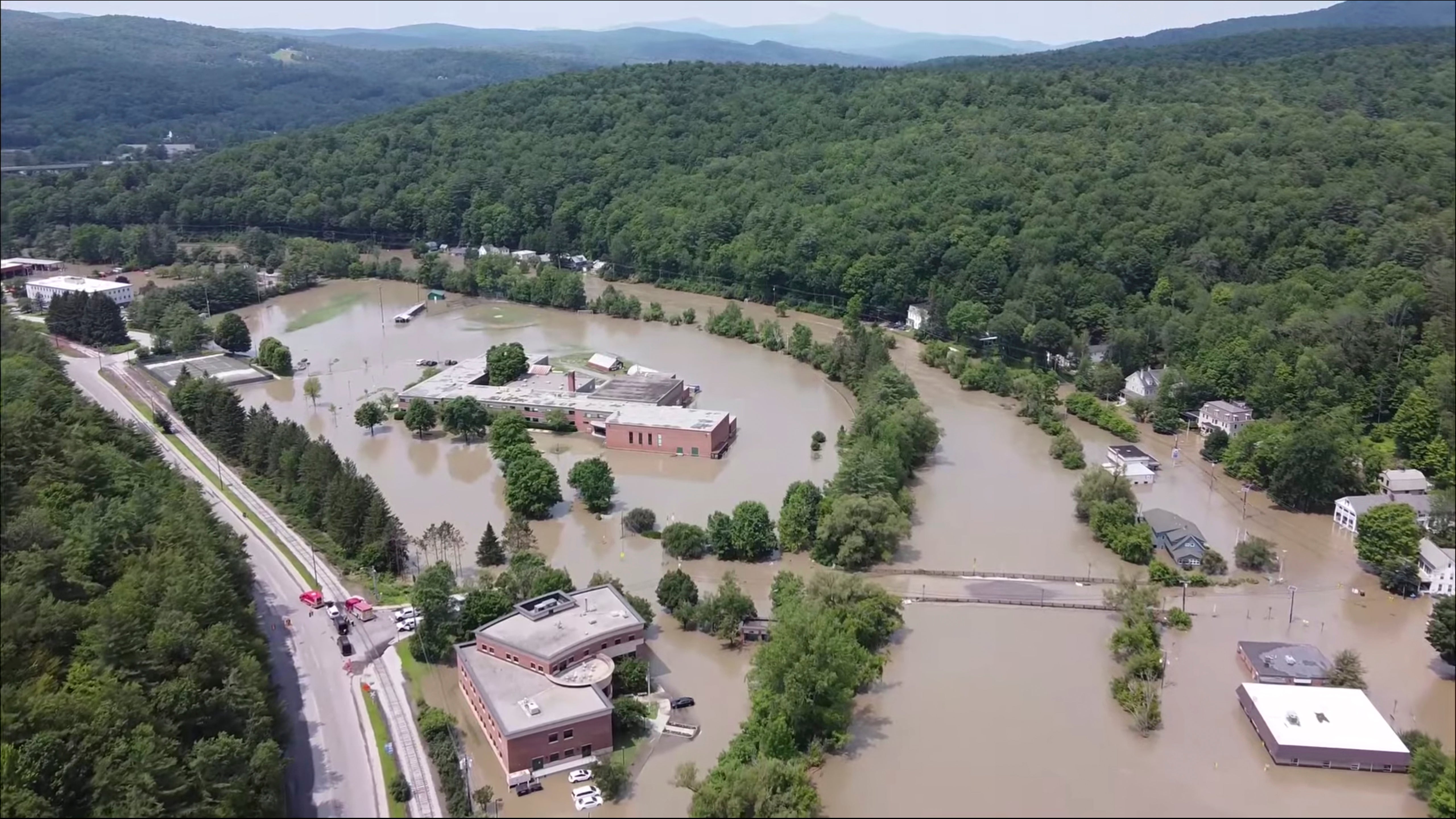Vermont floods prove that there’s no place to hide from the climate crisis
Nature and climate change will always be one step ahead of us


Your support helps us to tell the story
From reproductive rights to climate change to Big Tech, The Independent is on the ground when the story is developing. Whether it's investigating the financials of Elon Musk's pro-Trump PAC or producing our latest documentary, 'The A Word', which shines a light on the American women fighting for reproductive rights, we know how important it is to parse out the facts from the messaging.
At such a critical moment in US history, we need reporters on the ground. Your donation allows us to keep sending journalists to speak to both sides of the story.
The Independent is trusted by Americans across the entire political spectrum. And unlike many other quality news outlets, we choose not to lock Americans out of our reporting and analysis with paywalls. We believe quality journalism should be available to everyone, paid for by those who can afford it.
Your support makes all the difference.Shortly after I became editor-in-chief of USA Today a decade ago, I asked the reporting team for a nationwide special report on how global warming would affect all parts of the country, from Florida to Seattle.
One of the goals was to identify the safest place in the entire country from natural disasters, such as rising seas, hurricanes, wildfires, earthquakes, tornadoes, etc.
They came up with Salt Lake City in Utah. Perhaps a good choice at the time, but 10 years later I realise we missed the idea that the Great Salt Lake would begin to evaporate.
I was reminded of that this week when climate-powered rain storms – nine inches in two days in some parts – flooded the capital of Vermont, Montpelier, and surrounding areas. The emergency prompted federal relief action and is likely to become the 13th billion-dollar climate disaster of 2023 (there were 18 in all of 2022).
As extreme heat has pummeled the southern and Western parts of the country in recent years, it’s become fashionable to predict that at some point a migration of sorts will develop as people seek cooler, less volatile climates.
Duluth, Minnesota is often cited as an ideal place to be in 20 years as the Earth gets hotter, and indeed real estate prices there have begun the creep up. Much to the shock of Minnesotans and anyone who ever spent a frigid winter up there.
Vermont has also been cited as a future climate change Shangri-La. But the events of this week show that no place is safe. There is nowhere to hide from the effects of the earth hotting up.
Super-powered rainstorms like the ones in Vermont and upstate New York have become increasingly common. Southern Florida had a major storm and flooding problem earlier this year. Northern California had several this past winter.
Likewise, the dense, orange smoke from Canadian wildfires that blanketed New York City and the Eastern Seaboard last month showed that climate problems elsewhere, in this case another country, could impact everywhere.
It’s difficult to predict what will come next with everything moving so fast. But scientists this week said one ominous development is that prolonged drought in some places is threatening the infrastructure of major cities. The ground underneath Chicago is shifting dangerously, they said. In London, the unusual dryness is cracking the British clay and soil used to build many older houses and offices, portending a massive safety issue if they start crumbling.
As new ripple effects of global warming emerge, we will continue to learn and take steps to mitigate whatever we can. New types of carbon-free cement for buildings. Wildfire prevention plans. Sea walls to defend against rising waters. A rearguard action, to be sure.
But nature and climate change will always be one step ahead of us. No place to run. No place to hide.
David Callaway is founder and editor of Callaway Climate Insights and a former editor of USA Today.
Join our commenting forum
Join thought-provoking conversations, follow other Independent readers and see their replies
Comments